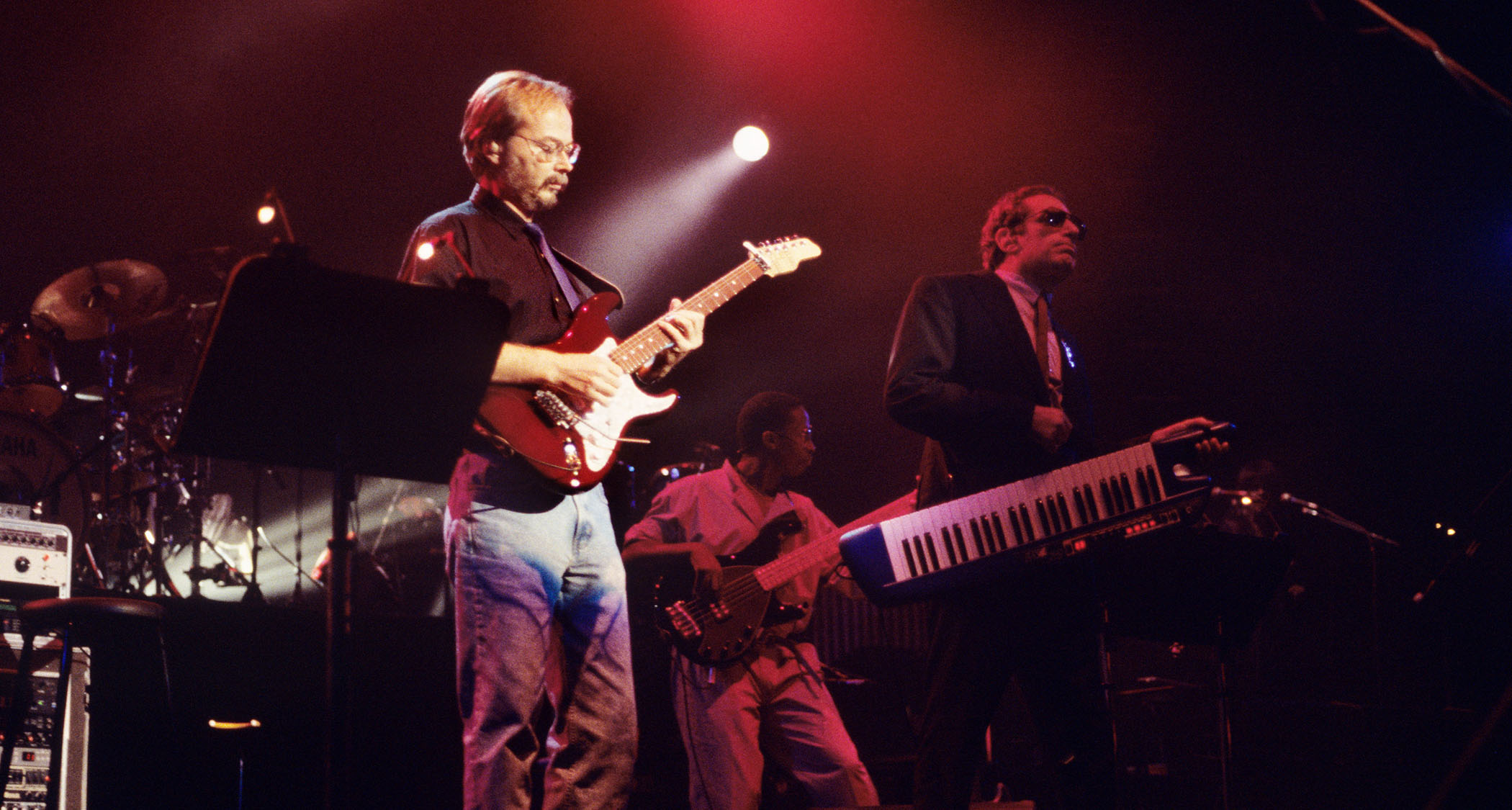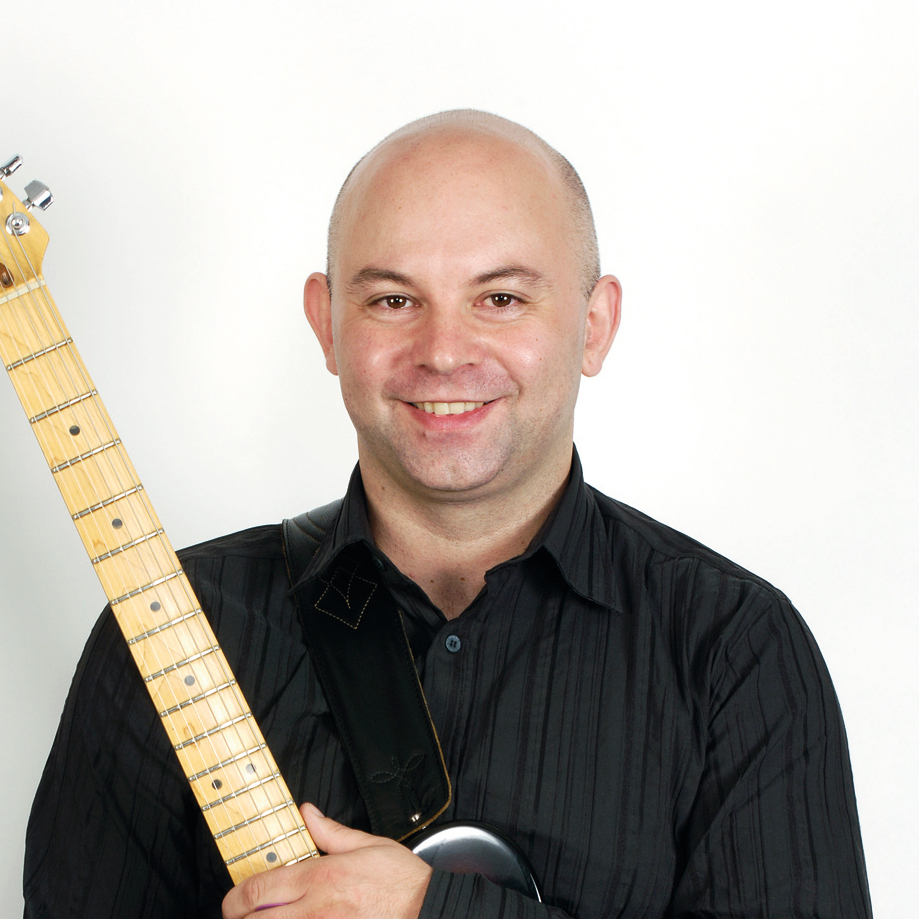What is the Steely Dan “Mu chord”? Breaking down the left-field chord voicings that will open up your harmonic world
This deep dive into the Steely Dan chordal approach is a masterclass in Donald Fagen and Walter Becker’s supreme harmonic awareness

Legendary American group Steely Dan blended rock, pop, blues, jazz, country, folk and almost any other imaginable popular musical idiom – the compositional style of keyboard player and vocalist Donald Fagen, alongside his writing partner and guitarist Walter Becker had it all.
Combine the pair’s considerable creative talents with an almost unfathomable A-list of the best of the best session musicians, literally queuing up to play on their recordings, with phenomenal production and you can see why their music has stood the test of time. And with over 40 million albums sold and an induction into the Rock & Roll Hall of Fame we see two further indications of their significance and popularity.
Steely Dan’s music manages to somehow combine accessibility with sophistication. Its intelligent lyrical content, incredible groove and feel blended with a harmonic sensibility, make it both bluesy and direct, and equally complex and involved.
One consistent ingredient in the Dan sound is the now legendary ‘Mu’ voicing – essentially a major triad with added 2nd or 9th degree, voiced in a particular way, so that the 2nd and 3rd intervals are located adjacently, to create an intriguing and mildly dissonant cluster.
The intention was to introduce harmonic colour and interest, but in a way that avoided any overtly jazzy overtones, which would be almost impossible to avoid when building chords by the usual method of stacking 3rds (7ths, 9ths, 11ths and so on).
Evidence of these voicings can be found all over Steely Dan’s music. Fans of the band enthusiastically trace them down and point them out, rather like the ‘Gretty chords’ famously associated with The Beatles.
Our mission here is to establish a working vocabulary of these voicings that you can employ in your own compositions and/or arrangements so that you can introduce a little (or a lot) of Dan-inspired sophistication into your playing and writing.
All the latest guitar news, interviews, lessons, reviews, deals and more, direct to your inbox!
Our mission here is to establish a working vocabulary of these voicings that you can employ in your own compositions
The musical examples that accompany this article are divided into five distinct sections. We begin with a short contextualised musical piece, so that you can hear and utilise these Mu voicings in a real-world scenario.
The next two examples will provide you with an extensive list of potential options that you can include into you chord vocabulary, both by establishing specific forms and then by superimposing a certain shape from different intervals, so that the same exact chord form can function in a variety of different ways.
We then look at a selection of examples that showcase how some other legendary players might imagine this colourful add9 sound, including jazz giant John Coltrane, fusion great John Scofield, gypsy jazzers Biréli Lagrène and Django Reinhardt, and psychedelic blues-rock legend Jimi Hendrix.
As usual, we conclude our study with a full piece, putting a selection of these voicings to work in musical context.
But treat these examples as the first step, taking time to learn each exercise or etude as written, but then consider these as the inspiration to create your own chordal figures, compositional connections or arrangement tools. It’s this that will allow you to bring some of this intelligent sophistication to bear, so it becomes a natural part of your personal sound. As always, enjoy.
Example 1. Mu chords in action
We begin with a Dan-inspired example that uses a selection of cluster add9 Mu voicings in the key of D (D-E-F#-G-A-B-C#), although the Cadd9 in bar 2 pushes us towards a parallel D Mixolydian tonality (D-E-F#-G-A-B-C).
In this introductory excerpt, we’re using open strings to achieve a more piano-like sound, where the major 2nd intervals (two frets apart) are easier to achieve. So we can hear how the guitar voicings sound, the examples are just guitar, bass and drums/click.
Example 2. Establishing some voicings
In this example we’re presenting a selection of useful voicings, starting in 2a) with R-9-3-5 configurations in open and movable forms. In 2b) we shift the 5th down an octave, to give us R-5-9-3, again in both open and moveable forms.
In 2c) we explore the potential of switching root and 5th to give us another set of shapes, while in 2d) we position the tone cluster between root and 9th. 2e) highlights a modern version of the chord, a quartal stack with no clusters, voiced 3-9-5-R, and round things of in 2f) with a selection of ‘rule breakers’ avoiding the tone clusters, and 2g), where we see some potential ‘minor-Mu’ candidates.
Example 3. Superimpositions
Here we’re highlighting the potential of taking a particular voicing and moving it to different positions along the neck while keeping the root note fixed in one location.
As this means each of the intervals changes based upon how each note now relates to the root, we can turn a major voicings into a minor chord, or a sus chord, dominant, half-diminished and so on. Example 3a) outlines the most consonant options, where our initial Eadd9 (E-G#-B-F#) can be moved a minor 3rd higher to give us Gadd9/E, or Em11 (R-b3-b7-11-5, low to high).
Example 3b) shows us the more dissonant or advanced Mu chords, where the same exact voicing can be used to imply E Phrygian (from the b9), E Lydian (from the 2nd), and E Locrian (from the b5).
Example 4. Crossroads add9 applications
Here’s how other artists might employ add9 ideas, starting with John Scofield (4a) that he used in his ’80s fusion era. Next (4b) is a classical violin-sounding double-stop courtesy of gypsy jazz virtuoso Biréli Lagrène, then a groovy add9 chordal idea (4c) from Jimi Hendrix.
Finally it’s single-notes, starting with a chromatic ‘tetrachord’ line (R-2-3-5) like saxophonist John Coltrane, before a Django line moving between Am(add9) (A-C-E-B) and Dm(add9) (D-F-A-E).
Example 5. Full Piece
We end our study of add9 Mu chords with a snappy piece using a variety of forms in the key of A major (A-B-C#-D-E-F#-G#), although we move through a selection of parallel tonalities, such as A Mixolydian in bar 2 (A-B-C#-D-E-F#-G), and A Phrygian in bars 9-11 (A-Bb-C-D-E-F-G).
I went from fingerstyle (bars 1-8), to hybrid picking for the rest of the piece, keeping the pick between my first and second fingers of my picking hand, ready to be switched during the held chord in bar 8, but use any approach that works for you and, as usual, cherry-pick the sections that you like best and add them to your box of tricks as you wish.
John is Head of Guitar at BIMM London and a visiting lecturer for the University of West London (London College of Music) and Chester University. He's performed with artists including Billy Cobham (Miles Davis), John Williams, Frank Gambale (Chick Corea) and Carl Verheyen (Supertramp), and toured the world with John Jorgenson and Carl Palmer.


